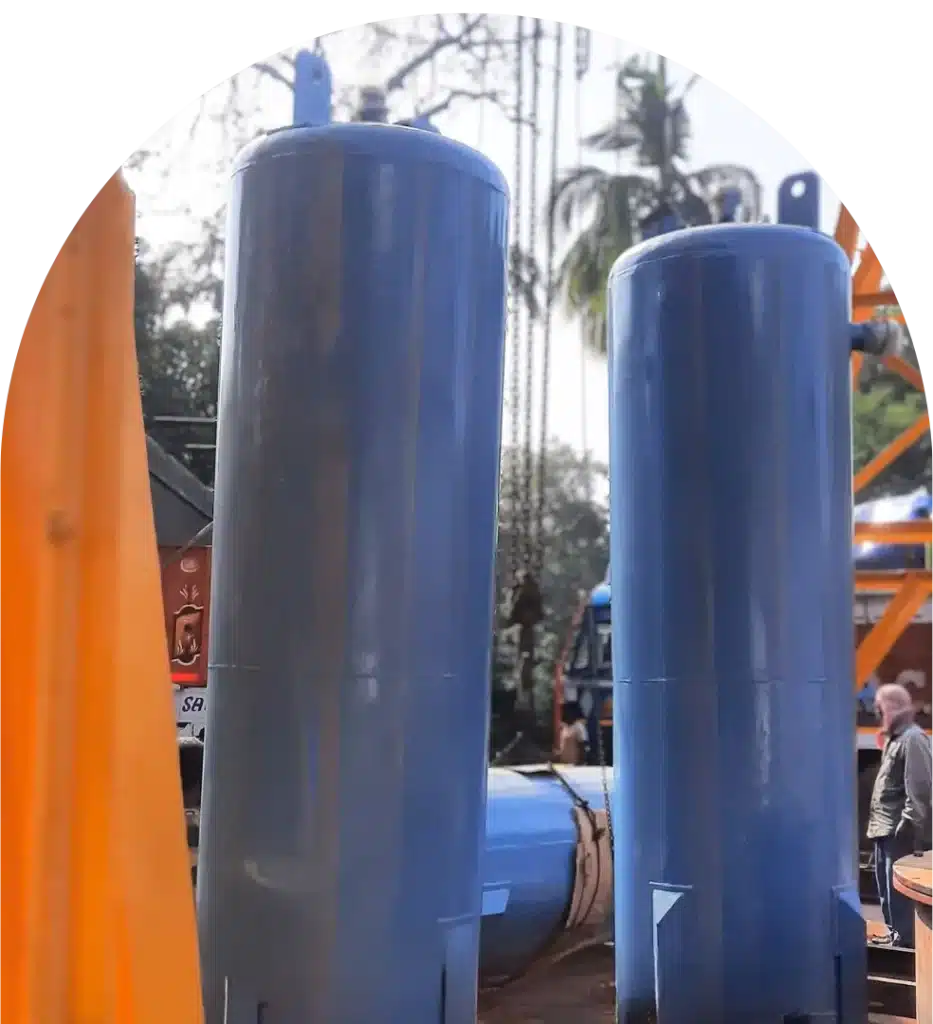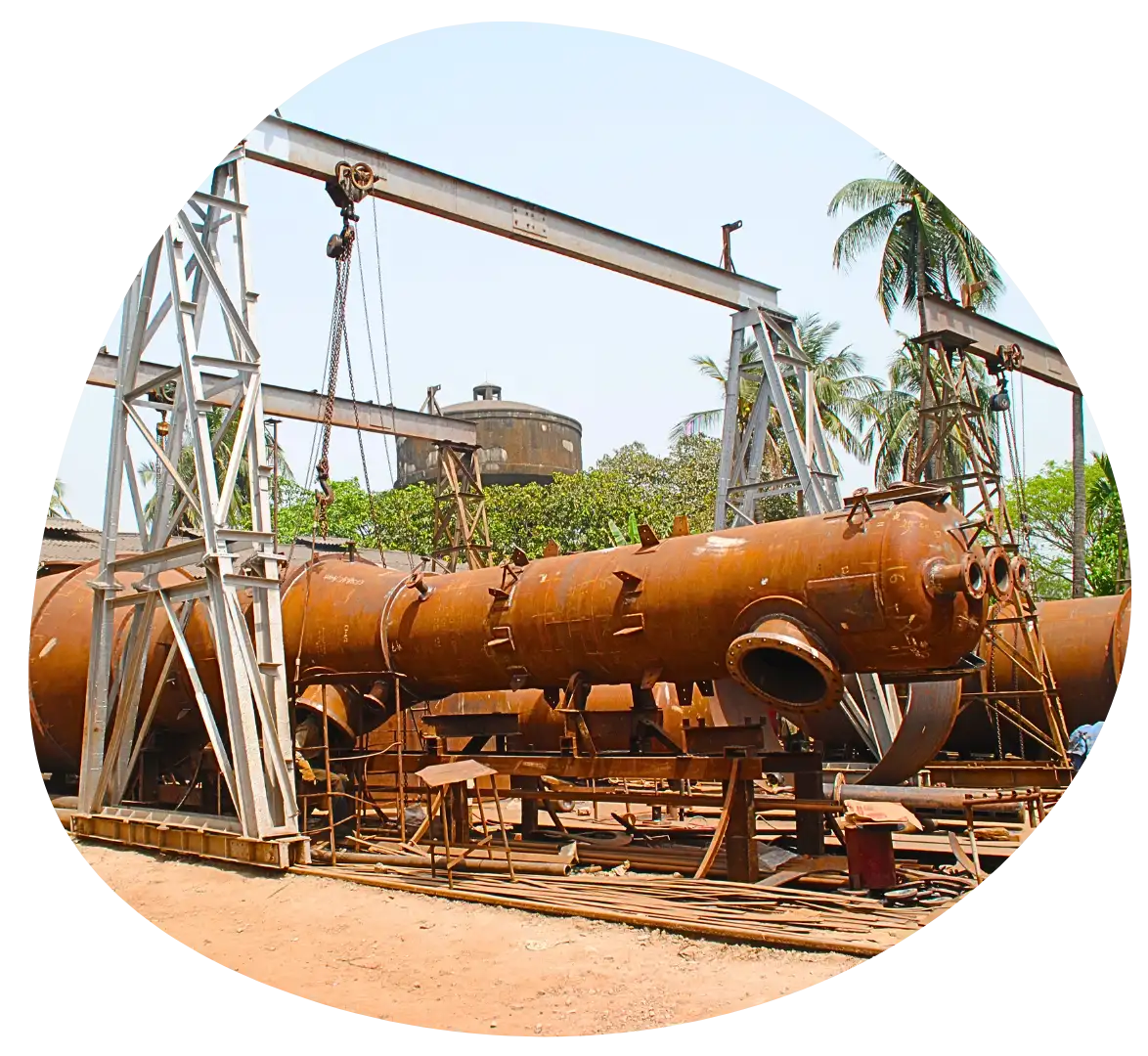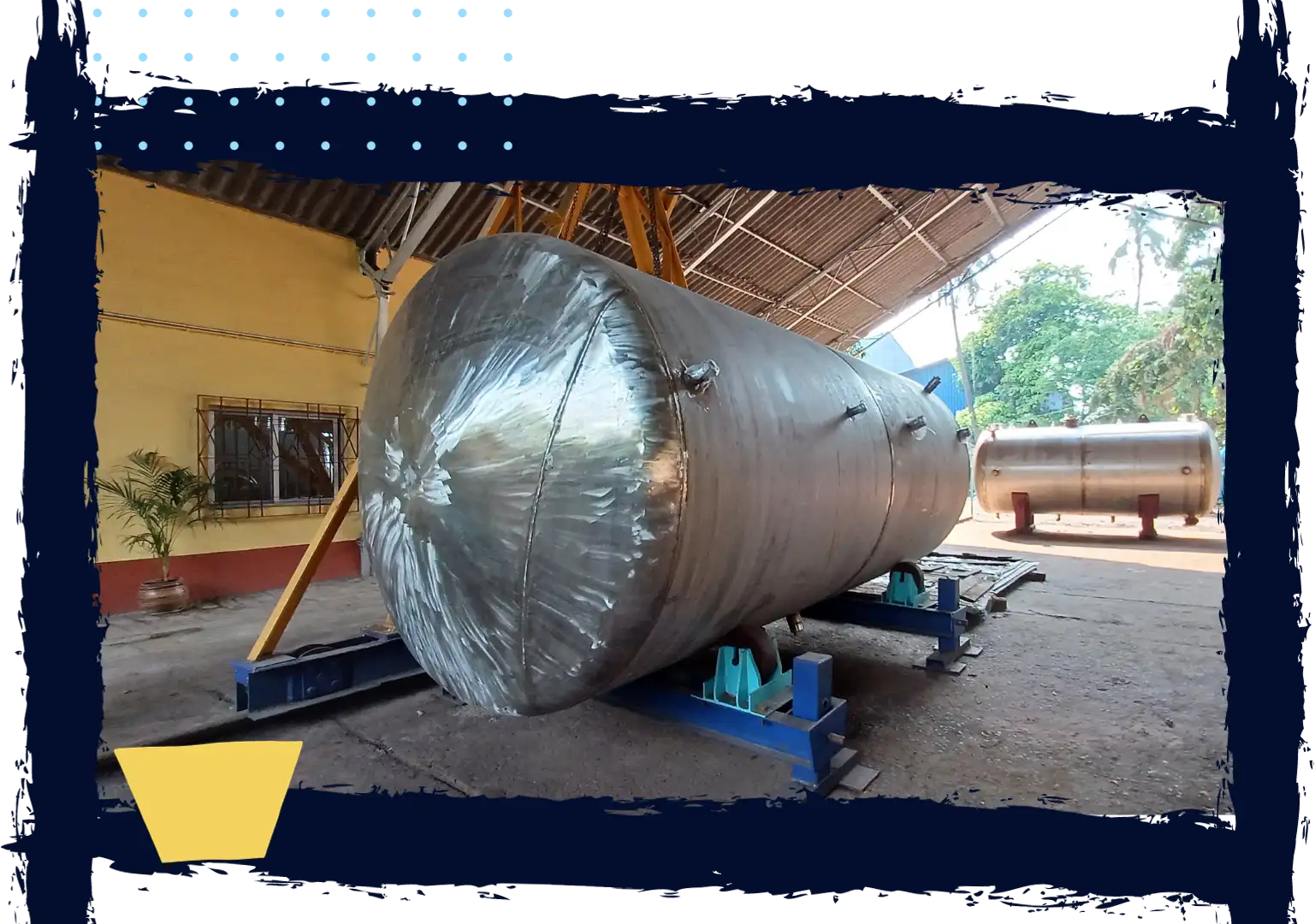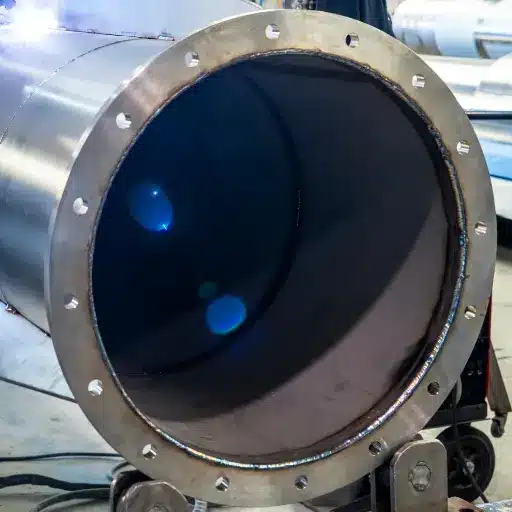Compressed Air Tanks - 5 Ways they Improve Your System Efficiency
Compressed Air Tanks or Air Receiver Tanks or Compressor Tanks play a vital role in a Compressed Air System which is a versatile and vital utility used in various industries for powering tools, equipment, and machinery.
The efficiency and reliability of a compressed air system significantly impacts a company’s productivity and bottom line.
Aefab Annapurna Engineering Blog | 5 minute read
One essential component that plays a pivotal role in optimising compressed air systems is the Compressed Air Tank or Air Receiver Tank. Compressor tanks, often overlooked but incredibly important, act as a vital buffer and storage system for compressed air.

In this blog, we will explore the profound importance of air receiver tanks and how they enhance the efficiency, stability, and overall functionality of compressed air systems.
About Compressed air tank or air receiver tanks
Air receiver tanks, also known as compressed air tanks or air receivers, are an essential component of compressed air systems. They serve as short-term storage units during temporary demand spikes and help systems perform more efficiently overall.
Compressor tanks act as a buffer between the compressor and the downstream system to smooth out pressure fluctuations and reduce the compressor’s load cycles, thereby increasing its lifespan. They also dampen pulsations from the discharge line of a reciprocating compressor, resulting in an essentially steady flow of air in the system.
Air receivers are also used as air reservoirs to take care of sudden or unusually heavy demands for air that’s in excess of the compressor’s designed capacity. This helps prevent the excessive cycling of a compressor.
The primary function of an air receiver is to store compressed air before it enters a piping system or pneumatic equipment. The receiver acts as a buffer between the compressor and the fluctuating pressure caused by changing demand. It ensures a steady and reliable supply of compressed air.
Properly sizing a receiver is a crucial factor for efficient operations of a compressed air system. A general rule of thumb is to allow 10 to 15 liters of tank volume for each liter per second of compressed air.
Types of Compressed air tank or air receiver tanks
There are two main types of air receiver tanks: wet and dry. Wet receiver tanks are located before the compressed air dryer, while dry receiver tanks are located after the dryer.
Wet receiver tanks are typically used to remove moisture from the compressed air. They work by allowing the air to cool and condense, which causes the moisture to drop out of the air.
Dry receiver tanks are typically used to store compressed air and to regulate the pressure in the compressed air system. They also help to remove any remaining moisture from the air.
Vertical and Horizontal Compressed Air Tank or Compressor Tanks
Compressed air tanks can be either vertical or horizontal in orientation, depending on the available space, system requirements, and application needs.
- Vertical tanks are often used when space is limited, as they have a smaller footprint. They can be installed vertically with a smaller ground area requirement.
- Horizontal tanks are typically used when there is ample space available, and they can be positioned in a horizontal orientation

The ways Compressed air tank or air receiver tanks benefit us:
Buffering Pressure Fluctuations
Air receiver tanks play a crucial role in stabilizing pressure fluctuations within a compressed air system.
When a compressor operates, it produces compressed air at a specific pressure. However, the demand for compressed air may vary based on the usage of pneumatic tools or equipment.
An air receiver tank serves as a buffer, storing excess compressed air when demand is low and releasing it when demand is high.
This helps maintain a consistent pressure and prevents abrupt pressure drops or spikes, which can negatively affect the performance of connected tools and equipment.
Reducing Energy Consumption
Efficiency is a key concern for any industrial operation. Air receiver tanks contribute significantly to the energy efficiency of a compressed air system. By storing compressed air during low demand periods, the system reduces the need for the compressor to constantly operate at peak capacity.
This “load/unload” operation of the compressor saves energy by allowing the compressor to run at optimal efficiency for longer periods. Consequently, this energy-saving mechanism leads to reduced operating costs, making Compressor tanks a valuable investment for any facility.
Cooling and Condensate Management
Compressing air generates heat due to the mechanical process involved. Air receiver tanks provide an opportunity for the compressed air to cool down. As the compressed air enters the tank, its temperature decreases, allowing moisture and condensate to condense and settle at the bottom of the tank.
This condensate can be drained off, ensuring the compressed air remains dry and of high quality. The cooling effect also contributes to prolonging the life of downstream equipment, such as filters and dryers, as they encounter less heat and stress from the compressed air.
Managing Peak Demand
In many industrial settings, there are instances when the demand for compressed air suddenly spikes due to the simultaneous operation of multiple pneumatic devices or equipment.
Without an air receiver tank, the compressor might struggle to meet this sudden peak demand, leading to a drop in system pressure and potentially causing disruptions in production.
However, with an air receiver tank, the excess compressed air stored can be efficiently utilized during peak demand, ensuring a consistent and reliable supply of compressed air to meet production requirements.
Extending Compressor Life
Air receiver tanks help in prolonging the life of compressors by reducing the on/off cycling frequency. Constantly starting and stopping a compressor can cause wear and tear on its components, leading to frequent maintenance and repair needs. By allowing the compressor to run at a steady pace and reducing the number of starts and stops, air receiver tanks help in extending the lifespan of the compressor, minimizing maintenance costs, and enhancing the overall system’s reliability.
Enhancing System Flexibility and Versatility
Air receiver tanks add a level of flexibility to compressed air systems. They enable the system to handle temporary high-demand situations without requiring an immediate increase in compressor capacity. Additionally, air receiver tanks facilitate the use of smaller compressors in applications where the demand varies widely, providing a cost-effective and efficient solution. This flexibility in system design and operation allows for adaptability to changing production needs and requirements.
Safety and Backup Supply
In the event of a compressor malfunction or maintenance downtime, the air receiver tank acts as a reserve, supplying compressed air to critical operations and ensuring minimal disruption in production. This backup supply can be essential in maintaining safety measures and avoiding costly delays during unexpected compressor outages.
Sizing and selecting air receiver tanks
When sizing and selecting an air receiver tank, it is important to consider the following factors:
- Compressed air demand: The size of the air receiver tank should be based on the compressed air demand of the system. The tank should be large enough to meet peak demands, but not so large that it is inefficient.
- Compressor capacity: The size of the air receiver tank should also be based on the capacity of the compressor. The tank should be large enough to store enough compressed air to keep the compressor running at its optimal efficiency.
- System pressure: The air receiver tank must be able to withstand the operating pressure of the compressed air system.
- Operating environment: The air receiver tank must be made of a material that is suitable for the operating environment. For example, if the tank will be used outdoors, it must be made of a material that is resistant to corrosion.

Installation and maintenance of air receiver tanks
Air receiver tanks must be installed and maintained properly in order to ensure their safety and reliability. Here are some important tips:
- Installation: Air receiver tanks must be installed on a level surface and must be properly anchored.
- Safety devices: Air receiver tanks must be equipped with safety devices, such as a pressure relief valve and a pressure gauge.
- Maintenance: Air receiver tanks should be inspected regularly for signs of corrosion or damage. The tank should also be drained of condensate regularly.
Applications of Compressed air tank or air receiver tanks
Compressed air tanks or air receiver tanks are an integral part of a compressed air system. The applications are found across industries and their utilities. Few of them are listed here.
- Manufacturing and Production: Compressed air powers a wide range of industrial machinery, including pneumatic tools, conveyors, robots, and packaging equipment in manufacturing facilities.
- Construction and Engineering: Construction sites use compressed air for operating jackhammers, drills, painting equipment, and other tools essential for construction tasks.
- Healthcare: Compressed air is crucial in medical facilities for running various medical devices, such as ventilators, dental drills, and anesthesia machines.
- Automotive Industry: Compressed air is extensively used in automotive plants for powering tools, operating assembly lines, and providing pneumatic power for paint spraying and other processes.
- Energy Sector: Compressed air systems play a role in energy production and distribution, including applications like air-assisted flares and pneumatic controls in power plants.
- Aerospace: In the aerospace industry, compressed air is used in aircraft maintenance, assembly, and various applications in the production of aircraft components.
- Food and Beverage Industry: Compressed air is used for packaging, filling, and bottling processes in the food and beverage industry, ensuring product quality and hygiene.
- Mining and Exploration: Compressed air is employed in mining operations for drilling, ventilation, and powering equipment used in extraction and exploration.
Compressed air systems provide a reliable, clean, and efficient source of power for a wide range of applications across various industries. Proper design, maintenance, and optimization of these systems are essential to maximize their benefits and ensure operational efficiency.
Improving the system efficiency & reducing cost
In conclusion, air receiver tanks are fundamental components that significantly enhance the efficiency, stability, and longevity of compressed air systems.
Their ability to buffer pressure fluctuations, reduce energy consumption, manage condensate, handle peak demand, extend compressor life, provide system flexibility, and act as a safety backup makes them a crucial investment for any facility relying on compressed air.
Proper sizing, installation, and maintenance of air receiver tanks are imperative to maximise their benefits and optimise the performance of compressed air systems.
Investing in a well-designed and appropriately sized air receiver tank is a strategic decision that not only improves operational efficiency but also leads to cost savings and a reliable compressed air supply – a win-win for any industry seeking to optimise its compressed air infrastructure.
Share this post
About Aefab Annapurna Engineering
Aefab Annapurna Engineering has a company-wide commitment to building high-quality stainless steel tanks, pressure vessels & equipment with on-time deliveries. We are ready to go the extra mile to exceed customer expectations.
As a premier stainless steel and carbon steel fabrication facility in Kolkata, India, Annapurna (AEFab) has more than 30 years of experience in stainless steel fabrication that has not lost its benefits despite the challenges of the fabrication process.
More than fifty years in business have given us the knowledge, skills and experience required to safely produce high quality, custom fabricated stainless steel equipment.
Related insights
Ample space for your big projects!
15,000+ sq ft area
7,000 sq ft covered and floored shed
8,000 sq ft open area
Gated compound with boundary wall
24-hour security and CCTV surveillance


Manufacturing unit
- 2, Rabindranath Tagore Road, Dakshineswar Kolkata 700076, West Bengal, India
- 400 m from the nearest metro and railway station
- 7 km from the Kolkata Airport
Reach out to Us
If you have anything to talk about/enquire/need support, let us know. We will go through your requests and respond within 2 business days.
Speak to us or drop us a WhatsApp message

Aefab Annapurna Engineering is the Manufacturer and Fabricator of Stainless Steel & Mild Steel – Tanks & Vessels, Process Equipment, Heat Exchangers, Material Handling Equipment, Bridge Girders & Bridge Bearings.










